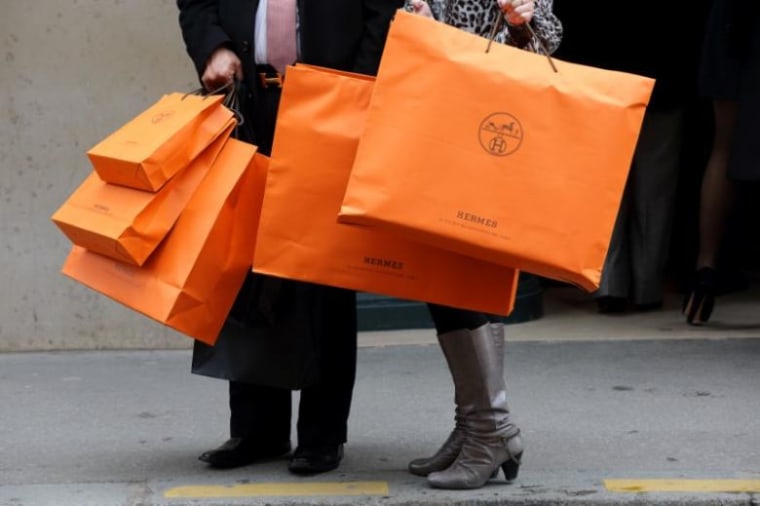The average shopper is feeling a little merrier this holiday season, spending about 6 percent more than last year, for a total of $1,226. But Americans earning above $100,000 a year will splurge a full $1,000 more, according to a new survey.
“People have gotten away from this notion that they’re embarrassed by spending,” said Rod Sides of Deloitte, which conducted the survey. “The level of spending, the fact that it’s almost double, does tell us that folks are feeling better about the economy and their economic situation,” he said. Altogether, Deloitte found that nearly 80 percent of shoppers plan to spend the same or more this year.
Research from PwC found a similar pattern. “Overall, consumers told us they plan to spend 6 percent more this holiday than they did last year — what’s driving that, though, is very interesting. Almost all of that growth is in the upper income levels,” said Steve Barr, consumer markets retail leader at PwC. Americans with incomes of $100,000 to $150,000 for instance, said they plan to increase their holiday-season spending on gifts, other merchandise, travel and experiences by 15 percent.
Consumer confidence is back
Buoyed by an improving labor market and big gains in the stock market, consumer confidence will boost retail sales as much as 4 percent, according to both the National Retail Federation and research company Brand Keys.
“I think, to a certain degree, some of what we’re seeing is a better feeling about the economy and people’s lives,” said Robert Passikoff, founder and president of Brand Keys, which expects households to spend an average of $936 on the holidays this year.
The NRF expects an average spend of just over $967, based on the results of its annual holiday spending survey, and the group predicts an increase of between 3.4 and 4 percent on the strength of a generally healthy economy, spokeswoman Ana Serafin Smith told NBC News.
“Unemployment is really good right now so that means more consumers are working. Wages have gone up slightly, which allows more consumers to have a little more flexible spending money,” she said. “Consumers are going to splurge a little bit more, whether it’s on themselves or friends and family.” Half of shoppers plan to buy for themselves when they shop this year, up from just over one-third in 2012, Deloitte found.
Halfway done by Black Friday
And this spending continues to start earlier. Brand Keys found that just over half of Americans will be shopping prior to Black Friday, up 10 percentage points over last year. “Virtually half of the holiday purchases look like they’re going to be made before Black Friday, and Black Friday itself is something that’s just starting to become less of a beginning of the holidays, less of a specialty day in terms of sales,” Passikoff said.
There is even evidence that more Americans today view holiday shopping as a year-round activity: A new survey from Accenture found that nearly two-thirds of people buy holiday gifts throughout the year, looking for deals on flash sale sites and events like Amazon Prime Day.
Partially as a result of this trend, legacy brick-and-mortar department stores still face an uphill battle. Macy’s and Kohl’s, which both announced their quarterly earnings Thursday, reflect this: Kohl’s earnings fell short of expectations, while Macy’s managed to eke out profit gains even as sales fell.
“The store-based retailers are realizing that to remain relevant, they’re having to enhance the in-store experience,” Barr said. “Retailers that are undifferentiated — they’re the ones we’re seeing close their doors or struggle to engage the consumer.”
“I think what we find is the way in which they have to deliver the customer experience is changing,” Sides said. “When we first went online, for a lot of people, it was about price. Now, I think the whole online experience is about convenience.”
